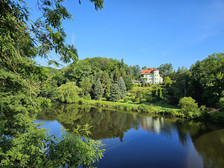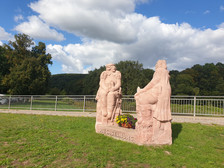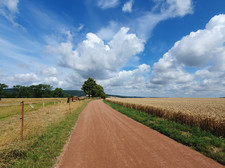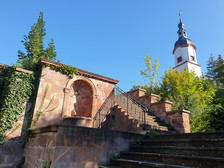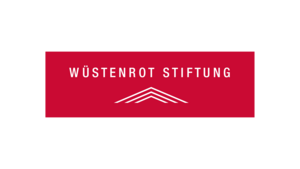Wechselburg in the district of Central Saxony is one of the smallest municipalities in Saxony. The 1,800 inhabitants live in a total of twelve villages that are combined to form the municipality of Wechselburg. Their appearance is correspondingly village-like - with large four-sided courtyards, small half-timbered houses or cottage dwellings on the architectural side and agricultural land, pastures for large animals or orchards on the scenic side. Wechselburg Monastery, also known as St Cross Basilica or Wechselburg Castle, is located in a bend in the Zwickauer Mulde. The basilica, whose foundations were built over 850 years ago, is of impressive Romanesque simplicity and austerity, complemented by a Gothic vault added in the 15th century, and the adjoining castle park are attractions for visitors. On 12 November 2018, the 850th anniversary of its consecration, Pope Francis awarded the Wechselburg collegiate church the honorary title of papal basilica minor. It is one of two pilgrimage churches in Saxony. Today, Benedictine monks fulfil their religious duties here.
Visitors can also find peace and quiet and inner contemplation in a guest house, and the monastery complex is also regularly open for tours and events. It is also one of the waypoints on the Wechselburg forest adventure trail, a family hiking trail that leads to the porphyry nature trail on Rochlitz Hill - the rock with its characteristic red colour was quarried here and gives numerous buildings in south-west Saxony and beyond their typical colouring.
